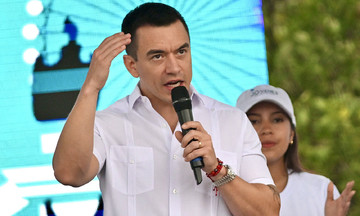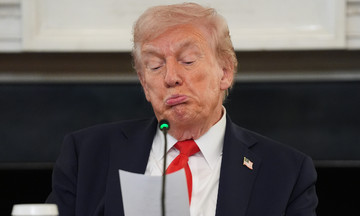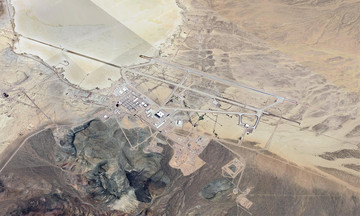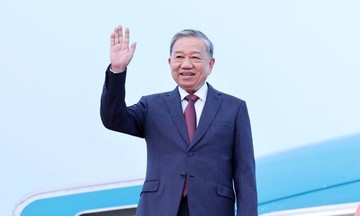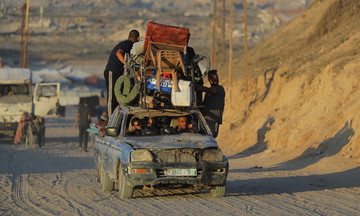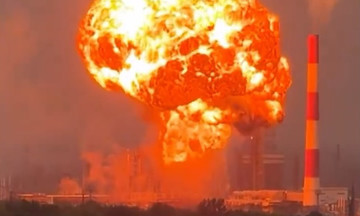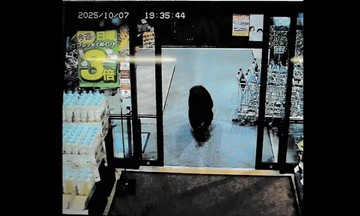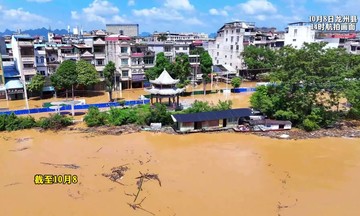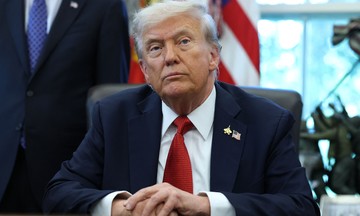The Pentagon on 4/9 accused two Venezuelan military aircraft of approaching a US Navy ship in international waters, calling it a "serious provocation". US media later reported that Venezuela deployed two F-16A/B fighter jets near the USS Jason Dunham to "show off its strength".
A day later, unnamed US defense officials revealed that Venezuela continued to send two F-16 fighter jets "buzzing" the USS Jason Dunham, despite warnings from Washington. The incidents occurred amid rising tensions between Washington and Caracas, after the US deployed a large number of warships to waters near Venezuela, citing anti-drug operations.
The presence of Venezuelan F-16s is noteworthy, as Venezuela is the only country considered an adversary by the US among the 25 nations operating this type of fighter jet.
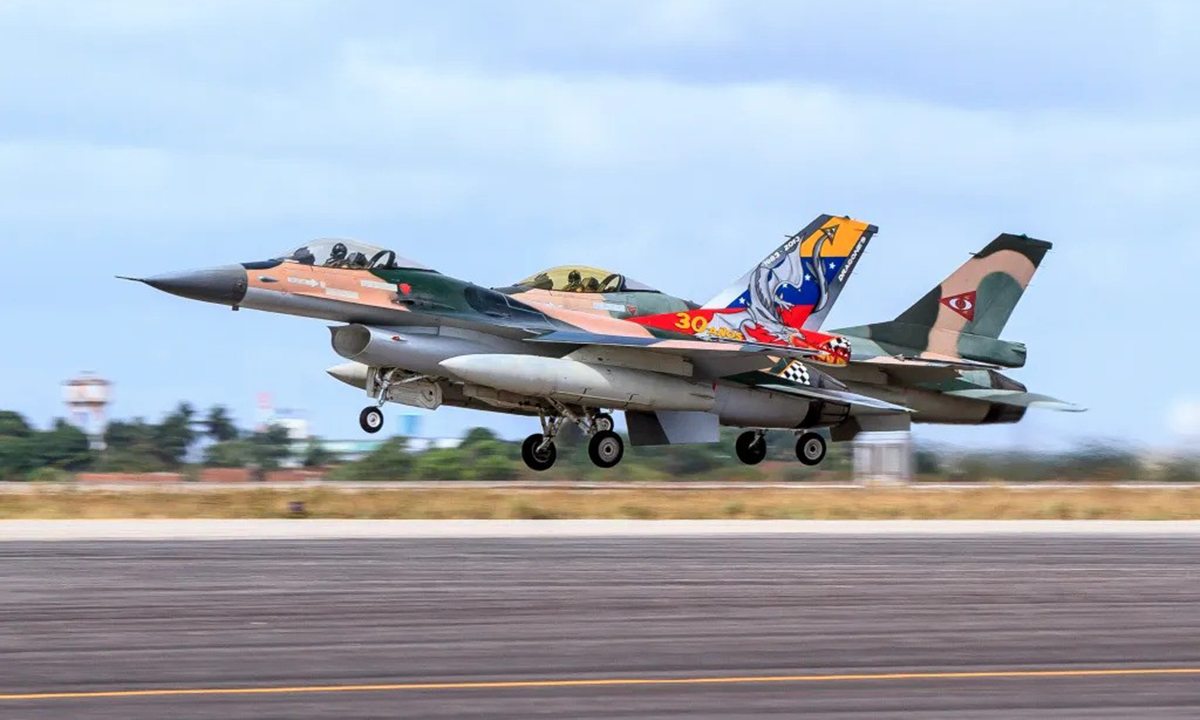 |
Two Venezuelan F-16A fighter jets participated in exercises in Brazil in 2013. Photo: Brazilian Air Force |
Two Venezuelan F-16A fighter jets participated in exercises in Brazil in 2013. Photo: Brazilian Air Force
"It’s interesting that one of the most popular 4th generation fighters produced by the US is operated by Washington’s top rival, right in their backyard," commented Sakshi Tiwari, editor of the defense website Eurasian Times.
The US and Venezuela haven't always been at odds. The two countries maintained friendly relations, beginning when the US recognized Venezuela as an independent nation in 1835. They signed a trade agreement the following year.
In the following years, bilateral relations grew closer. In 1895, the US sided with Venezuela in its border dispute with Britain over the territory that is now Guyana.
When large oil fields were discovered in Venezuela in the early 20th century, President Juan Vicente Gomez granted exploration rights to US companies. Venezuela then became a key oil supplier to the US, further strengthening the relationship between Caracas and Washington.
During the Cold War, the US considered Venezuela an ally in Latin America, and Washington was Caracas’ largest trading partner. This period also marked Venezuela’s efforts to modernize its air force to compete with other countries in the region.
The Venezuelan government considered various fighter jets like the Swedish JA-37 Viggen, the French-made Mirage 50 and Mirage 2000, and the Israeli Kfir C7, before choosing the US-made F-16. In May 1982, Caracas signed an agreement to purchase 16 single-seat F-16A and eight two-seat F-16B fighter jets, all built to Block 15 standards.
Strict arms export regulations under President Jimmy Carter initially led to Venezuela being offered the F-16/79, an export version of the F-16A/B with reduced features and a less powerful J79 engine compared to the original F100.
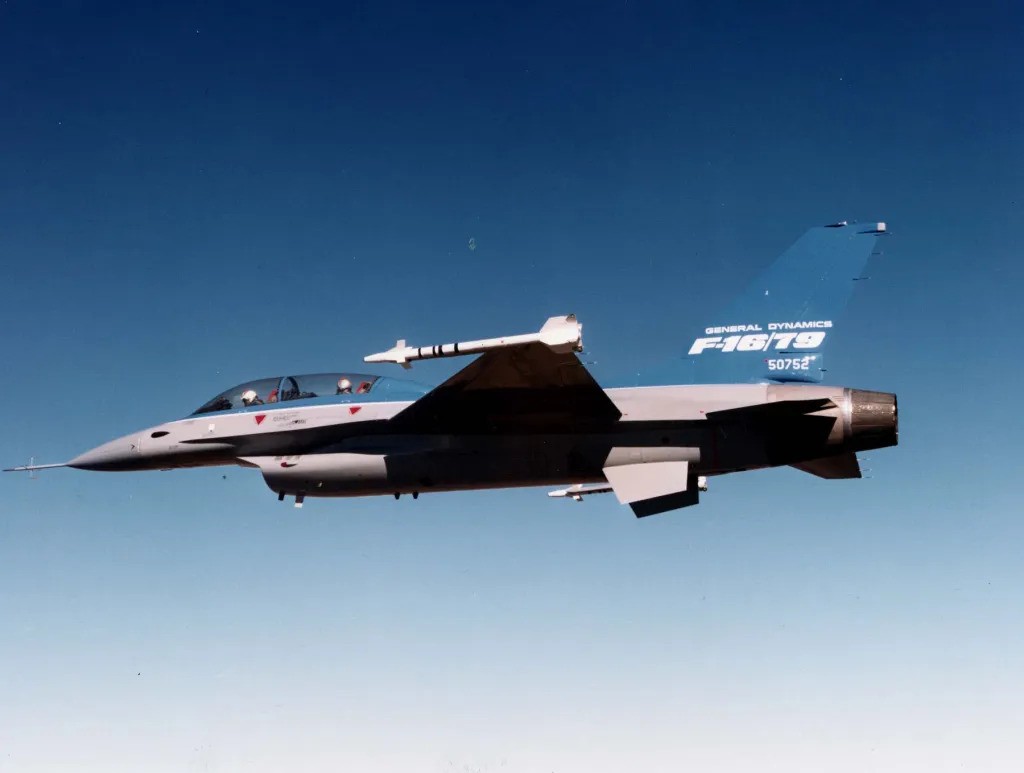 |
F-16/79 prototype. Photo: US Air Force |
F-16/79 prototype. Photo: US Air Force
Caracas rejected the F-16/79. The administration of US President Ronald Reagan later changed its policy and agreed to sell the standard F-16 version to Venezuela. The aircraft, along with AIM-9L/P-4 short-range air-to-air missiles, were delivered between 1983 and 1985, replacing the aging Mirage III and Mirage 5 fighters in the Venezuelan Air Force.
The deal was considered a source of national pride for Venezuela, as no other country in Latin America at the time possessed fighter jets with comparable capabilities. Venezuela was the only South American nation to operate F-16s for about 20 years, until Chile received 46 aircraft between 2006 and 2011.
Venezuelan F-16s saw action during a coup attempt by officers loyal to Hugo Chavez in 1992. The coup failed, and government F-16 pilots shot down at least three airborne targets, including an OV-10 Bronco reconnaissance aircraft.
After Chavez came to power in 1999, Venezuela developed close military cooperation with Russia and China, despite US discontent. Washington responded by imposing an arms embargo on Caracas, angering Chavez, who threatened to sell the F-16s and sensitive accessories to Iran.
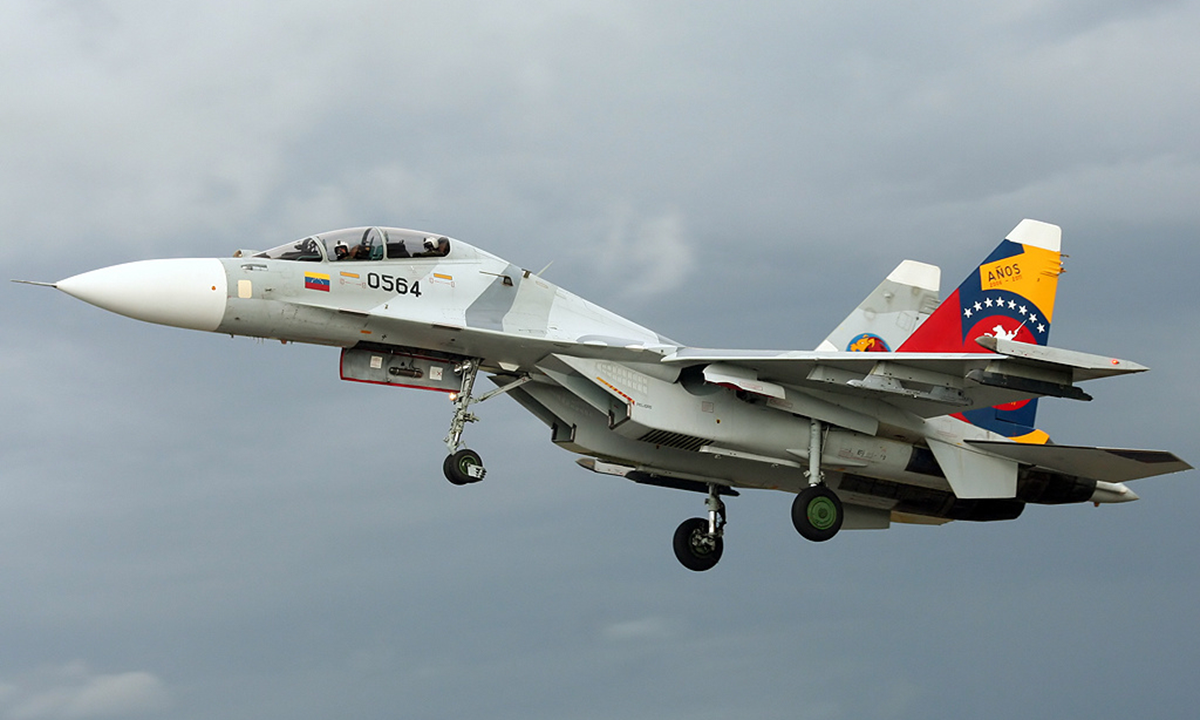 |
Venezuelan Su-30MK2 fighter jet in 2011. Photo: Airliners |
Venezuelan Su-30MK2 fighter jet in 2011. Photo: Airliners
After Chavez's death in 2013, President Nicolas Maduro took office and continued his predecessor’s policies. The US has repeatedly criticized the Maduro administration and alleged electoral fraud in Venezuela, most recently in 2024 when Maduro won.
The escalating tension led the US to stop providing technical support for Venezuela's F-16 fleet, prompting the country to turn to Israel for equipment.
The Venezuelan Air Force is believed to have very few operational F-16s left. It also operates about 21 Russian-made Su-30MK2 heavy fighters. This makes Venezuela one of two countries, along with Indonesia, to operate both F-16 and Su-30 fighter jets.
Pham Giang (Eurasian Times)



